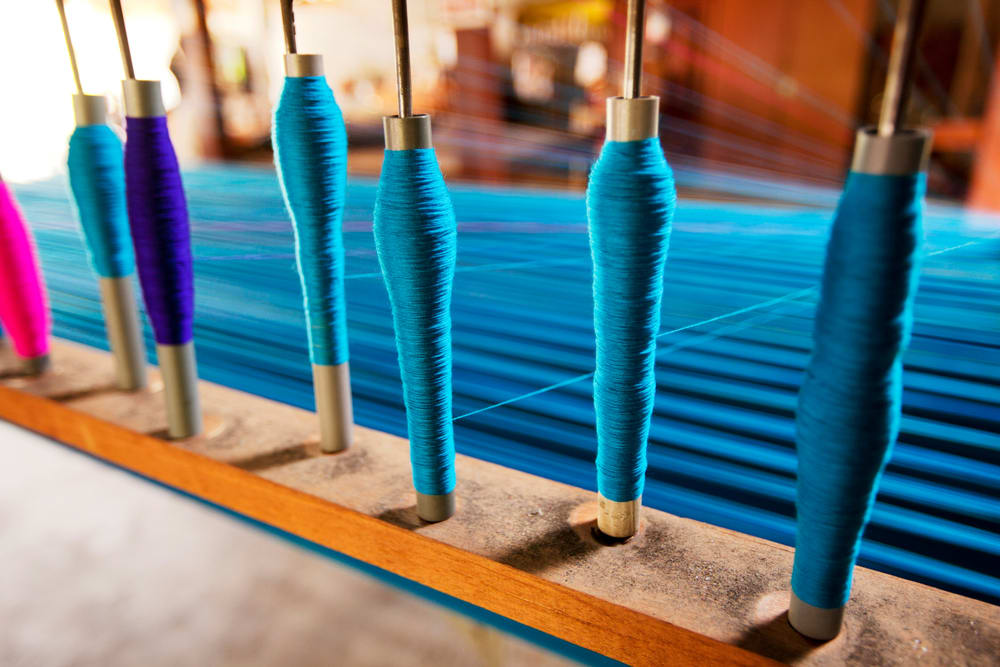Mastering the Lexicon of Fashion



Introduction
A lexicon is a dictionary or the vocabulary of a language, people, subject or branch of knowledge. An example of a lexicon is the jargon used in the fashion industry. Mastering the lexicon of fashion is imperative for fashion designers, fashion models, merchandisers, factory workers, production supervisors, quality control supervisors, advertising professionals, technical designers, brand representatives, procurement professionals, etc.
The lexicon of fashion is so vast that knowing all the terminologies for all the branches of textile manufacturing, garment manufacturing, sourcing and procurement, and supply chain management is almost next to impossible. However, as long as a fashion professional understands the key definitions of the work which he/she needs to accomplish, it is a good start for them. As they gather more experience in the industry, they will slowly start understanding the lexicon of fashion used by other teams and departments.
https://www.pexels.com/photo/woman-in-gray-coat-standing-on-stage-2920143/
How to master the lexicon of fashion?
During the three or four year’s degree/diploma in fashion designing, the students get ample exposure to the verbiage used in the industry. However, once they start working in the field, their knowledge about the lexicon of fashion increases manifold. These are some of the time tested ways of mastering the lexicon of fashion for rookie designers:
1. Spend time with other people from the industry
If a rookie fashion designer wants to master the lexicon of fashion, they need to spend time with the seniors in the industry. They should look for opportunities to work with them closely and, during the course of work, pick up the verbiage they use.
https://www.pexels.com/photo/person-sketching-dress-on-printer-paper-with-clip-board-1478477/
2. Read more about various departments in the fashion industry
There is no substitute for the knowledge one can gain through reading materials about any subject. A budding fashion industry professional should read important magazines like Vogue, Harper’s Bazaar, Playboy, Esquire, Trend, and other online publications to keep themselves abreast of the happenings in the fashion world.
These magazines cover all the four important fashion shows which happen in Milan, Paris, New York, and London in great detail. They also cover all other award ceremonies like the Grammy’s, Academy Awards, etc. and quote excerpts from the talks that famous fashion designers and buyers give during these shows. If the newbie follows these comments closely, they can master the lexicon of fashion.
Some of the famous quotes from the world of fashion which will teach a newbie a lot:
"Don't be into trends. Don't make fashion own you, but you decide what you are, what you want to express by the way you dress and the way to live." —Gianni Versace.
"What you wear is how you present yourself to the world, especially today, when human contacts are so quick. Fashion is instant language." —Miuccia Prada.
"Style is the only thing you can’t buy. It’s not in a shopping bag, a label, or a price tag. It’s something reflected from our soul to the outside world—an emotion.”—Alber Elbaz.
https://www.pexels.com/photo/stack-of-fashion-magazines-on-floor-6045028/
3. Watch fashion shows
Watching models walk down the runway during fashion shows is not only a treat to the eyes but also a way to learn. If the newbie observes the sleeves, seamlines, hemline, cuts, fall of the drape, etc., they can pick up a thing or two for their own collections.
They need to listen to what the Master of Ceremony (MC) has to say about the creations. Normally, the designer would have given enough literature for the MC to read out while the models were walking on the ramp. Listening to the description will help fashion professionals master the lexicon of fashion.
https://pixabay.com/photos/fashion-show-fashion-catwalk-model-1746617/
4. Listen to interviews, TeD talks, podcasts of the stalwarts of Haute Couture
In today’s world having a degree or diploma in any field is not enough. One has to constantly upgrade his/her skills to remain relevant in the industry. Studying new trends, new cuts, new fits, new fabrics which are being discovered, etc., and keeping themselves up to date is very important.
To master the lexicon of fashion, listen to YouTube videos and TED talks of the stalwarts of the industry. Along with the buzzwords in the fashion world, one can learn about many practical ideas. Any designer, who does not spend time doing research, eventually fades away. Their designs become stale as they fail to infuse new ideas into their work and create an amalgamation of mixed concepts.
Some of the most common words used by the fashion designers
Here is the list of the most common words used by fashion designers that a newcomer can start with. Knowing the meaning of the verbiage is not enough, understanding the inner meaning too is important for someone who is planning to master the lexicon of fashion.
- Pret-A-Porter: French designers use this term to mean readymade garments.
- Look- In the fashion world, it means the complete outfit, undergarments, ensemble from head to toe, including accessories (bags, earrings, bracelets, belts, etc.) and shoes. In the fashion shows, the professionals do not talk only about the dress, but about the complete ‘’look.’’ It also includes the hairdo and makeup.
- Haute Couture: Haute in French means high, and couture means dressmaking. Hence, it means fashion for the elite class or the celebrities in today's world. Being the highest level of fashion, the most expensive items of fashion are sold as haute couture, and the most exquisite craftsmanship is available in this segment of the fashion industry.
- Couturier: A person or company who designs haute couture is known as a couturier, and it is a matter of pride for someone in the fashion world to reach that stage. Only a handful of professional designers manage to do that.
- Avant-Garde: It means advance guard in French. In the fashion world, it is synonymous to being the frontrunner. Avant-Garde sets the new trends, fits, techniques, cuts and styles of fashion for everyone outside the fashion world.
- Atelier: The design studio or the workshop used by the fashion designer to complete his/her creations on paper/software and then create the actual garment.
- Silhouettes: It means the overall shape of the garment along with the accessories for the complete look. If the designer is working on a movie or TV series project which depicts a particular period in history, they need to get the silhouette of that era perfectly.
- Body Shapes: There are six body shapes: hourglass, inverted triangle, figure eight, oval, column and teardrop.
Figure 8 body shape
https://unsplash.com/photos/0UECcInuCR4
- In Vogue: If a design makes its way into the fashion magazine Vogue, that means it is a trendsetter. It is expressed as, “This summer this look is in Vogue.”
- Tchotchke: This Yiddish word means extensive detailing or treatment of a garment for expressing a negative feeling of overdoing the designs or colour patterns in a dress. Example of usage- “The dress appeared fussy, covered in ruffled tchotchke.”
Some of the most common words used by the fashion manufacturers
- CAD: It stands for computer-aided designs. It refers to software like Adobe Illustrator and similar tools which help the designers to create the designs digitally.
- CAM: It stands for computer-aided manufacturing. The manufacturers use a combination of CAD-CAM to come up with the final dress.
- Grading: It requires the manufacturers to take the pattern sample size and add, or decrease, the pattern size.
- CMT- It stands for cut, make, and trim.
https://unsplash.com/photos/laobUPA4jR8
- PDS- It stands for pattern design system.
- PO- Stands for purchase order.
- DTM- Stands for dyed to match.
Some of the most common words by fashion sales professionals
- BOM- It stands for bill of materials.
- POS- It stands for point of sale. In the present times, since a lot of sales happen online, cloud POS setups are used by e-tailers.
- DC- It stands for distribution centre and normally used in the e-commerce terminology.
- SCM- Stands for supply-chain-management. All the units from the farmer who grows the cotton/wool to the final product delivered to the customer’s home are mapped in SCM.
- Brick and Click: An establishment which has physical as well as online presence.
https://unsplash.com/photos/kTd2PvtqE_o
- Fashion House: Clothes are normally designed, made and sold under the brand name of a fashion house. A dye house is a place where the fabric or the finished apparel is dyed.
Conclusion
At Fashinza, we provide brands the means to create collections that do justice to their brand’s values! Brands can customise t-shirts, cargo pants, hoodies, chinos, joggers, evening gowns, or any other apparel for their collections as per their style. We help brands source sustainable fabrics, experiment with colours, and explore different prints. Fashinza connects you to the right kind of sourcing partner who will fulfil your requirements to meet your needs.
Whether you have started your journey as a fashion designer recently and are grappling to master the lexicon of fashion, or you are a veteran in the industry, we are there to help all. For any assistance you might need with launching your clothing line or enhancing your current stock, feel free to reach out to us!



















